Let’s face it, after surgery care at home is going to be messy, dirty, and a tad unpleasant. You’re going to need to urinate a few times a day, and poop as well. It’s normal, healthy and human to do so. And you're going to need help with these functions every day for a while.
I hate bedpans and commodes with a ferocity, and how someone needs to assist me with the most 'disgusting' aspect of everyday living. It's obviously unpleasant for them, too. Yet, hygiene and the after surgery care at home is of paramount importance. You don't want to land in hospital again due to an avoidable infection.
My 'regular' chronic pain can already make some most days unbearable. It's even more difficult to manoeuvre when a body part is broken or weakened. But you don't have a choice but to accept help after you've just had a major surgery (a spontaneous bilateral patellar tendon rupture in my case). So you might as well ensure that your caregiver(s) know what to do and how to help. Make the after surgery care at home as painless and smooth as possible for the both of you.
After a while you will both get used to the routine, and also realise that we all more or less poop and pee the same way. Nothing fascinating, so just get on with it. This post is part of a series where I share tips, resources and my recovery journey for knee surgery. (You can view the full series at the end of the post.)
❗️ Disclaimer: Knee injuries and surgeries, or any major surgery for that matter, vary widely from person to person. Your age, lifestyle, weight, circumstances, other chronic health conditions, medications, comorbidities, allergies and other issues can impact your recovery timeline, as well as the tools and methods required. They should be adapted for YOU.
This article and the resources provided below are based on MY own personal experiences with spontaneous bilateral patellar tendon ruptures, as a person with many chronic illnesses. It also includes extensive options to cover various knee surgeries - not everything is meant for your specific type of knee injury or knee surgery. They are meant for educational purposes and not to be substituted for medical advice. I am not a doctor, so please consult your own medical provider before trying anything out.
This post also contains affiliate links. It will cost you nothing to click on them. I will get a small referral fee from purchases you make, which helps with the maintenance of this blog. Read our privacy policy page for more information. Thank you!
Resources with a star ⭐ next to them are ones I’ve personally tried and would recommend!
1. Essential Hygiene Resources for After Surgery Care at Home
Visual Examples:
1.1 Bed Pans (for Peeing Whilst in Bed)
I place a disposable underpad / bed pad underneath before hoisting myself onto the bedpan. More often than not, droplets may splash over or stain the bed, so use them to keep it clean. You might need help to clean up for a while, so this makes it easier for your caregiver, too.
In the hospital, they put you in a diaper or place a plastic sheet under you the entire time. They don’t have the manpower to tend to your comfort all day long. I don’t have to tell you how uncomfortable and sweaty that gets. I also just can't pee into a diaper no matter how hard I try, so I had to struggle to use the bedpan. However, if you have incontinence or the patient has Alzheimer's or another medical condition, you might need to remain on a diaper.
You have more options at home, so try to make yourself comfortable. I hate to say it, but you’ll be in bed for quite a while, especially if you broke both knees like I did. If you don't like bedpans, you can use a urinal. There are both male and female ones available on the market. I find bedpans easier to clean properly, so I stick to those. Have baby wet wipes, tissue or toilet paper and hand sanitiser nearby to help clean up better after you're done.
1.2 Commodes (for Pooping)
There are a few different kinds of commodes you can get as well, so choose one that will suit you best. I have a portable, waterproof commode chair that has a cover. There are also commodes that are height adjustable, come with detachable legs, and other different features.
For a few months after my knee surgery, I had to do my business with my legs stretched out flat on the bed, as I couldn't bend them. After I was recovered enough, the commode came in useful as I could be wheeled to and from the shower.
2. No-Rinse Soap & Shampoo for Washing Your Body & Hair
Some people may be too weak or ill after a major knee surgery to take a full shower. So nurses in the hospital or carers at home may need to wipe them down with body wipes. I personally hate that because Singapore is humid, and I never feel clean or fresh after such a simple wipe down.
I prefer to use no-rinse body foam or cloths, then wipe the soap off again with warm water. To my surprise, it actually felt clean that way. I used to need a shower daily or else I’d feel gross. So I was surprised that I could adapt to this method of cleaning up.
Washing my hair is trickier. We tried a few funnels and equipments, but they all make a mess anyway. So be prepared to mop up if you want to wash your hair in the room. When I was a little better, I was able to wash my own hair using two basins - one behind and one next to me. Doing so allowed me to scrub my scalp clean and rinse out at different angles. I even got pretty efficient at it!
I use regular shampoo for that. I tried a few different brands but have concluded that I hate dry shampoo as they feel icky with residue. I did use it in the hospital, but also requested for a basin of water and a cloth so that I could wipe it out after.
The no-rinse shower caps are okay. I do prefer to wipe them down with clean water as well. They definitely aren’t as clean as shampoo and water, but they are clean enough for days when you need to just get your hair washed quickly. I 'treated' myself to a full-on shampooing session every 3-4 days, and used the shower caps in-between as needed.
Pin to Your Knee Injury & Knee Surgery Resource Boards:
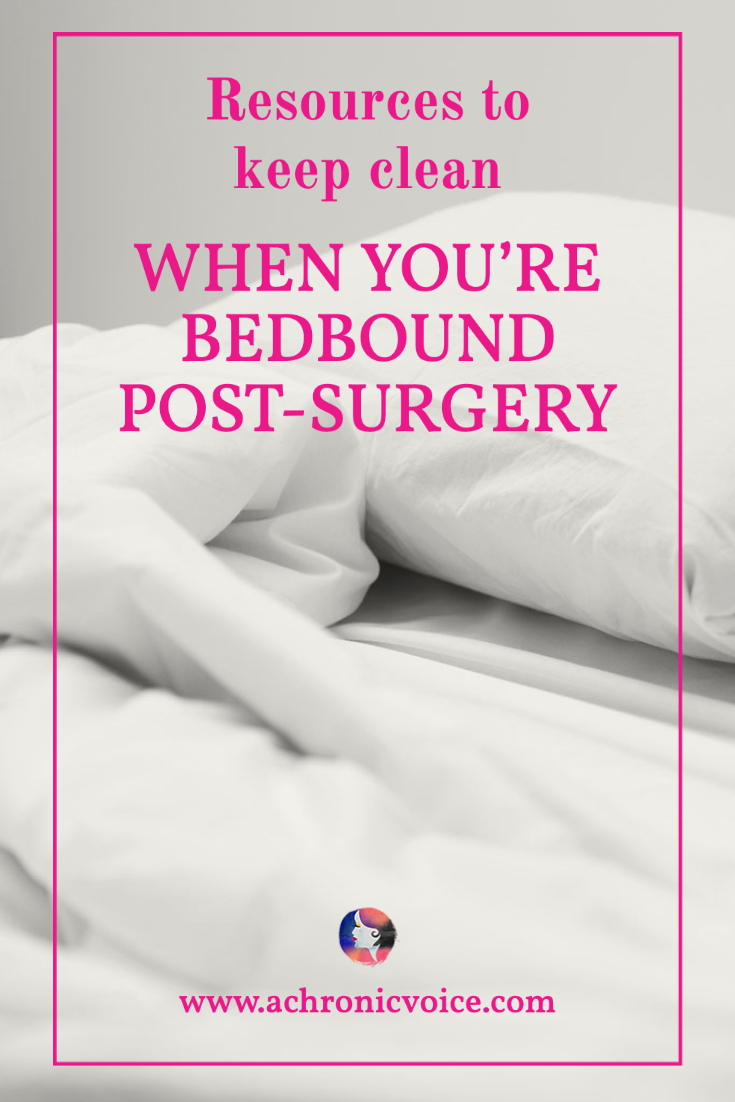
3. Level Up Your Toilet - Make It Accessible
We had to renovate our bathroom as it was in poor condition anyway. Thankfully, kind souls provided the funding to do so. (Renovation sure isn’t cheap!) We’ve added in a shower chair that folds up into the wall to save space. Railings have also been installed beside the toilet bowl and also near the shower area. Space that was previously taken up by cupboards have been reduced or removed.
It still hurts my knees when I bend to sit on the toilet bowl even after 6 months. My hands are also always in pain from Lupus and Sjögren's, so pulling myself up with the railings hurt, too. My advice would be to get an adjustable toilet bowl seat. It will save you a lot of pain.
The commode we bought isn’t height adjustable either; I'd advise you to get one that is. I've had to stick to the bedpan mostly because of that. As you can see, height is an accessibility feature - so do ensure that whatever installments you make to your toilet and bathroom are suited to your own height.
Visual Examples:
3.1 Shower Chair / Shower Bench
This is useful in the shower for supporting your legs, especially when you need them flat. Over time you can wash whilst sitting with your legs down, but having it there can provide relief whenever your legs or knees are tired.
3.2 Raised Toilet Seat
I don't have one, but wished I did. A raised toilet seat is useful for anyone with chronic pain; simple movement such as standing and sitting hurts, when you live with chronic illness. It is extra useful right after knee surgery, as you won't be able to bend your knees much.
3.3 Grab Bars / Railings
In the beginning, I needed manual assistance from my helper or dad just to stand and sit. Over time, I was able to do so myself, with the aid of railings. If you notice, every disabled toilet outside has these for accessibility reasons!
Conclusion to Part 2 of the 'After Surgery Care at Home' Series
This post is part of a series on after surgery care at home, especially for post major knee surgery. Hygiene comes first, because it is of the utmost importance during the recovery process. Keeping clean is also an everyday routine that is unavoidable, and can also help make us feel a little fresher and better. I hope these hygiene resources for after surgery care at home have been useful to you, and feel free to ask more questions in the comments below!
Pin to Your After Surgery Care at Home & Hygiene Resources Boards:
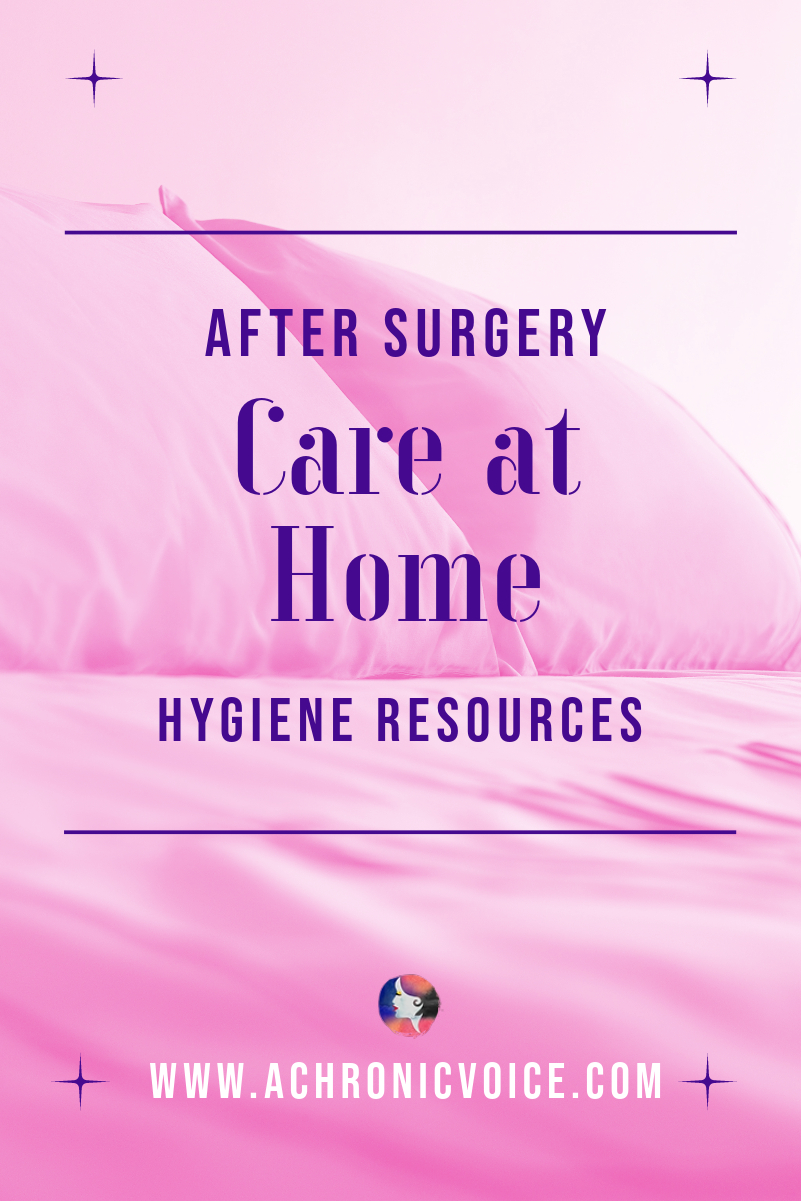

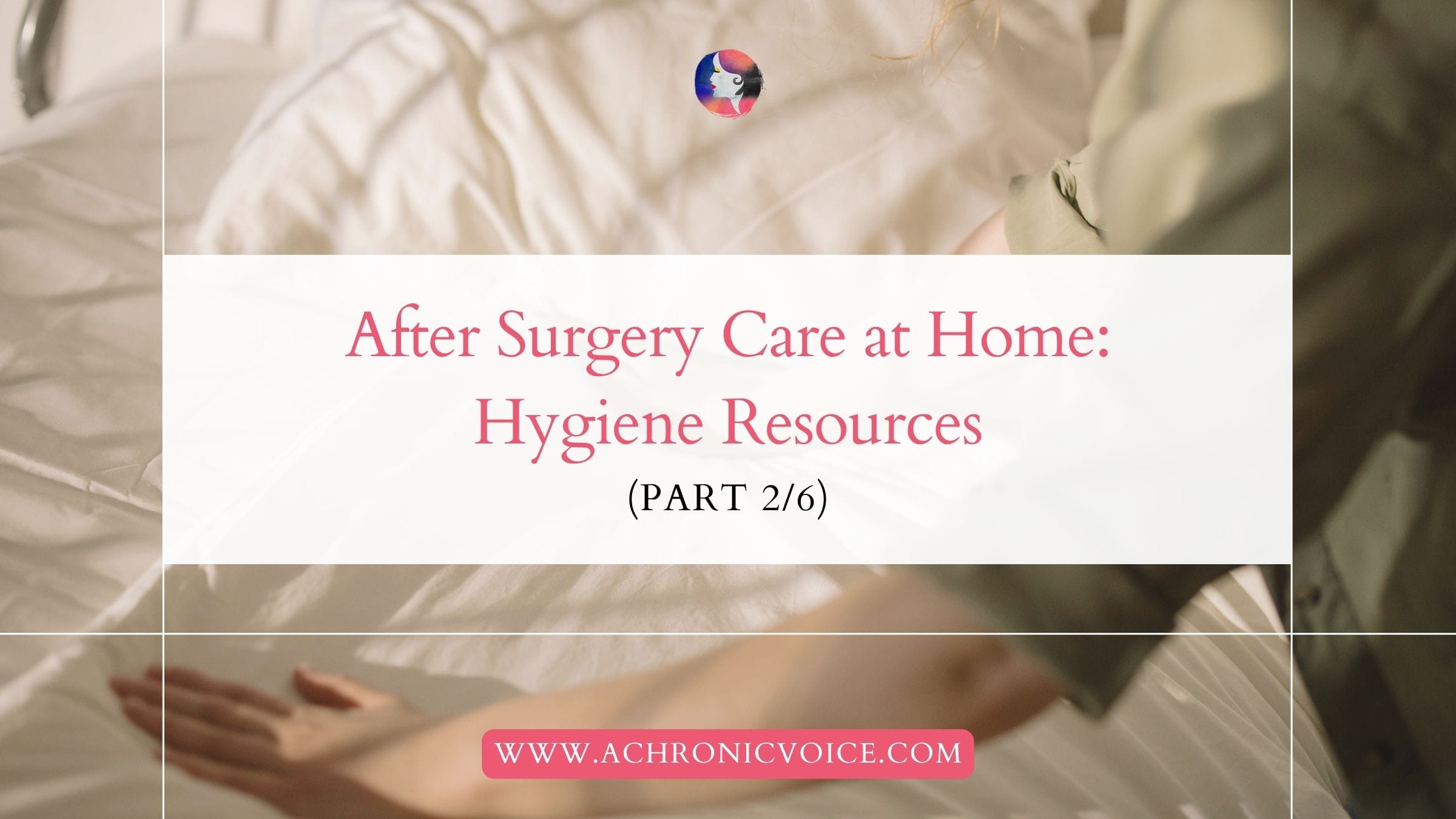





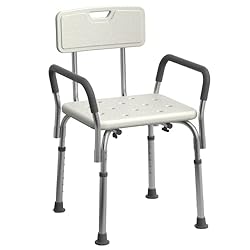
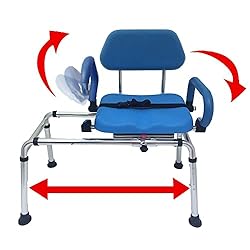





Member comments